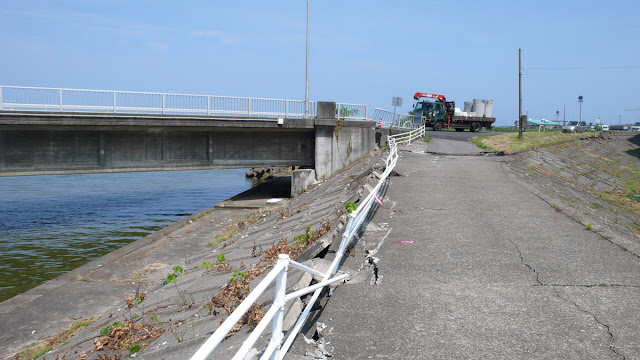 |
| August 2007 (37.3675 Degrees, 138.5433 Degrees) Rinko Yasaka Bridge |
We left the mountains south of town to look at the bridges across the U River. Unlike the Sabaishi (which had lateral spreading
for about 5 km upstream), the banks of the Ugawa (a river south of the Sabaishi
in Kashiwazaki) only had laterally spreading for about one km from the mouth of the river.
This may be due to the more meandering path of the Sabaishi which resulted in
more sediment being dropped along the banks. Also, the Sabaishi travels along a large sand dune with poorly compacted
soil.
Another difference between these two rivers is that the
Ugawa has eight meter high levees built up along the banks and much
greater flood protection (pumps and gates).
Perhaps it is this tendency of the Ugawa to flood that periodically
cleans its banks of loose sediment. At
any rate, the tall dikes meant that when the banks spread, they carried more
material, and caused damage to the slope paving and flood control facilities.
The first bridge upstream from the mouth of the U River is a two span concrete I girder bridge on
seat abutments and a single column bent with a hammerhead cap. This location had the most lateral spreading on the Ugawa. The entire levee was dragged toward the river and the abutment was damaged and separated from the wingwall. We'll take a closer look at this bridge tomorrow.

































